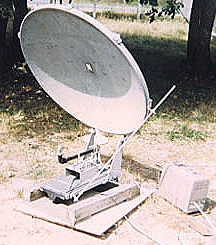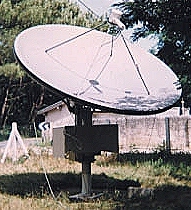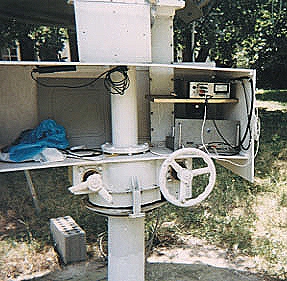
For 10 years and more, after being swl and radio ham (f11abl and f1gqb) we went into the adventure of the radio astronomy.
At the beginning, except for some readings and some discussions with rare radio hams
we knew in no way in what to hold us it.
We thought that one should necessarily work on microwave frequencies ( several ghz),
and as a many we had seen numerous photos of parabolae, then we went into our first
attempts.
They were centered on the sun which seemed to us the easiest to receive.
One of our first receivers, on 9.9 ghz, using a surplus navy radar with diodes front end,
without preamplifier, a parabola with 1m of diameter, and reading on a voltmeter.

We also used over 1030 mhz a big dish aerial with 3.3 metres of diametre,
bought from surplus, with a stand allowing to direct it manually in site and azimuth.
The receiver was a receiver of radar beacon, with a transistor preamplifier
(mrf 901), the whole was followed by a paper graphic recorder.


THE RESULTS were very modest... On 9.9 ghz we never received the sun and on 1030 mhz
the receiver was very unstable, but we received the sun clearly, regularly , without ambiguity.
We have several times and in a constant way recorded rises and sunsets. One observes fringes
of interferometry. But because of the instabilities tracks were often difficult to read.
These positive but insufficient results motivated a serieuse study. We contacted,
observatory of FLOIRAC,near BORDEAUX. We were very clearly helped and advised.
All this allowed us to eliminate our first errors.